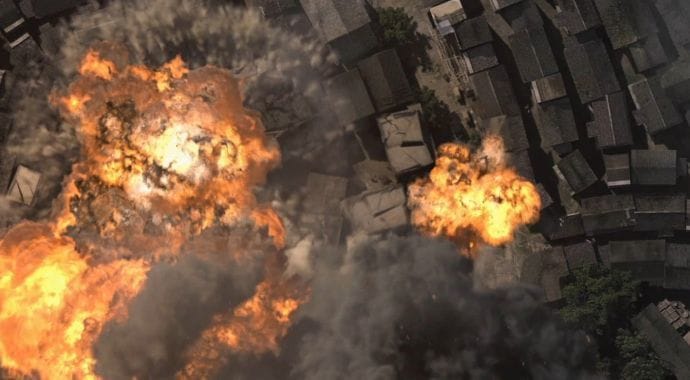Find out how they made that incredible rabbit, and the role V-Ray played in making virtual apartments look real
Developed by VR master Bipolar Studio, Follow the Rabbit employs a CG bunny to take the viewer from a lazy morning in a classy Barcelona apartment to the day’s end at a comfortable family home in Sicily, via Auckland, San Francisco, and Cape Town.
Using VR to build the experience is genius marketing move which helps sell the unique Airbnb experience of staying in someone’s home. It helps that Bipolar Studio has shown painstaking attention to detail, using props, lighting, weather, sounds, and music to give a very real sense of time and place in a virtual world.
Bipolar Studio's managing partner David Karapetyan told us about creating this city-hopping tour.
You worked out the concept for this project. What did you want to convey?
The main thing we pinned on the board when we started concepting ideas was the feeling that time flows faster when we travel.
We also wanted to highlight that one of the unique things about Airbnb is that you’re staying in someone’s home. Just by looking at the signs of life, you can do some detective work around who lives there, and we brought this into the concept. If you look all around in 360, there are lots of details that give us these hints.
What makes BiPolar Id different to other studios?
We are a small but capable team that can crunch out big work. One of the biggest differences is that we do everything in house. We’re super obsessive about pushing every little detail to maximum quality with our unique internal approach to CGI. We love working on ideas and bringing them to life, and we hope that this care shows in the final work.

What makes you different in your VR work?
We literally do everything in a VR headset from making eggs in the morning to taking a shower with it. Actually, none of us have seen each other outside the VR world.
Just kidding! To make a VR project there has to be a strong unified involvement from the creative to the execution. We keep harmony between the creative and technical sides, so that both are very strong, but don’t get in each other's way. Being a single but efficient team is what makes us different.
We also strap EEG neuro headsets on people to map their engagement for R&D purposes. That helps us too.
We pay attention to every element from the scale, down to the materials of the objects based on distance from the viewer, where the light falls, the art direction and the colors.
VR experiences are a little different to a more straightforward video. How do you plan them out, and what additional elements do you have to consider?
This is a great question that people don’t spend much time thinking about. Our spatial experience is very different in VR than in 2D. If you’ve seen a set in VR, you can quickly interpret everything about it. That’s because we associate and remember the VR setting as if we had actually been there. So when we start to design a setting, we think of everything about the geography of it. We pay attention to every element from the scale, down to the materials of the objects based on distance from the viewer, where the light falls, the art direction, and the colors. It’s completely made as a VR experience.

The rabbit is the star of the show. How did you create it?
We wanted to create a very realistic bunny, so we thought it would be a good idea to start with the skeleton for anatomical proportional accuracy. We spent a lot of time working on the fur — the final bunny was probably version 30. We didn’t have a real bunny for personality and characteristics reference, so we watched every bunny video on YouTube we could find. We might have even kicked some of those videos to the trending category.
We then took the videos we liked and edited them together into a single flow for the bunny, and started to hand animate the character. You don’t fully see the bunny until the end, but when you do there is a lot of detail and realism. You can see the individual hairs on the fur, the whiskers, and even the veins inside the ears when the sun backlights it. It was a fun process for us.
V-Ray for 3ds Max saved us here. It was the only renderer that could handle a big 360° scene with lots of light refractions, and a character with fur, and not sacrifice the render speed.
How did V-Ray help you realize your vision?
This was a challenging project for any renderer. We needed everything to render as fast as possible, but we had complex light refractions happening with the environment and the character’s fur. And we had to render in 4K for VR, which is already four times slower than a traditional 2D format.

V-Ray for 3ds Max saved us here. It was the only renderer that could handle a big 360° scene with lots of light refractions and a character with fur, and not sacrifice the render speed. With any other renderer it would have taken at least double the time we needed to render it, and that's massive in a 4K scene with 1800 frame length! We could not have done it with any other renderer. We are thankful for the amazing support, and we are all big fans of V-Ray.
What’s next for Bipolar Studio?
We love collaborating with people to bring ideas to life together. This is what motivates and inspires us every single day. We hope to keep doing this, and making some cool work for brands across the world.





